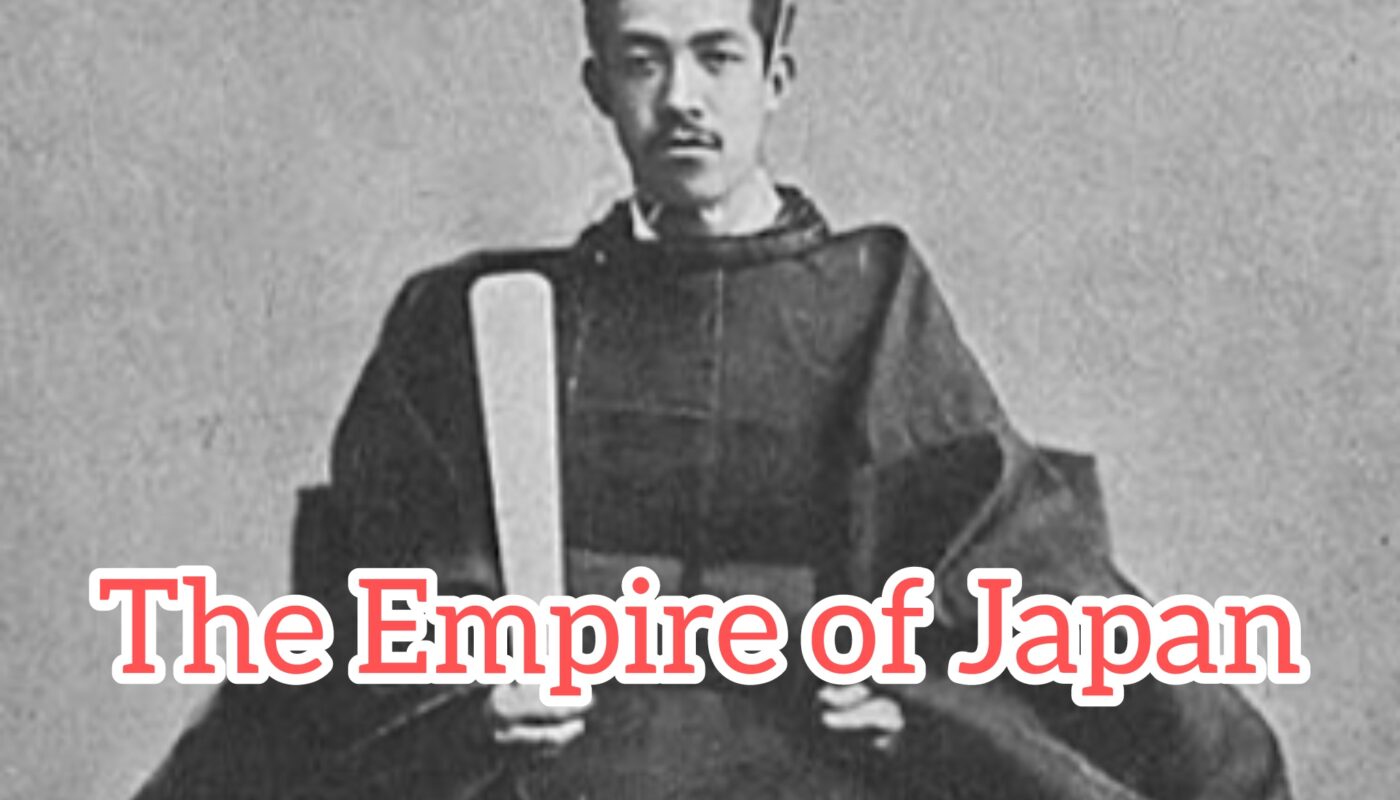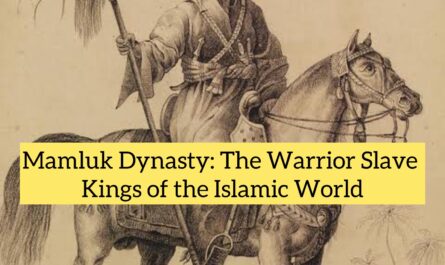Introduction
The Empire of Japan (1868–1947) was a period in Japanese history marked by the country’s rapid modernization, imperial expansion, and transformation into a major global power. Rising from the ashes of a feudal system, Japan emerged as an industrialized nation with a powerful military. While the empire brought economic growth and global recognition, it also engaged in aggressive military campaigns and colonization, culminating in its central role during World War II.
Historical Background
End of the Tokugawa Shogunate
-
Before 1868, Japan was ruled by the Tokugawa shogunate, a feudal military government.
-
Japan followed a policy of sakoku (national isolation) for over 200 years.
-
This changed with the arrival of Commodore Matthew Perry of the U.S. Navy in 1853, leading to forced opening of Japanese ports.
Meiji Restoration (1868)
-
In 1868, Emperor Meiji was restored to power, ending the shogunate and starting the Meiji Era.
-
Japan embarked on a path of rapid modernization, industrialization, and Westernization.
-
The slogan “Fukoku Kyōhei” (“Enrich the country, strengthen the military”) guided national policy.
Government and Structure
-
The Empire was a constitutional monarchy under the Meiji Constitution (1889).
-
The Emperor was revered as a divine figure but shared power with elected and appointed officials.
-
The Imperial Diet (legislature) was created, with the Privy Council and Genrō (elder statesmen) playing key advisory roles.
-
The military had considerable autonomy, especially the Imperial Japanese Army and Navy.
Military Expansion and Colonial Empire
Japan’s rise was marked by strategic military victories and territorial gains.
First Sino-Japanese War (1894–1895)
-
Fought over influence in Korea.
-
Resulted in victory for Japan and the acquisition of Taiwan and Port Arthur.
Russo-Japanese War (1904–1905)
-
First time an Asian power defeated a major European power.
-
Japan gained control over Korea and parts of Manchuria.
Annexation of Korea (1910)
-
Korea became a formal Japanese colony.
-
Japan imposed strict control, suppressing Korean culture and exploiting resources.
World War I (1914–1918)
-
Japan sided with the Allies.
-
Seized German territories in the Pacific and Shandong Peninsula in China.
-
Expanded influence in East Asia through the Twenty-One Demands on China.
Economic and Industrial Growth
-
Japan developed a powerful industrial economy based on steel, shipbuilding, and textiles.
-
Corporations known as zaibatsu (e.g., Mitsubishi, Mitsui) controlled vast segments of the economy.
-
Infrastructure such as railways, ports, and telecommunication networks were modernized.
Cultural and Social Changes
-
Western education, legal systems, and military practices were adopted.
-
A growing middle class emerged, although rural areas lagged behind.
-
Japanese nationalism and emperor worship were promoted through Shintoism and education.
Rise of Militarism (1930s)
-
The 1930s saw the rise of ultranationalism, militarism, and totalitarianism.
-
The military gained control of the government, often acting without civilian oversight.
Invasion of Manchuria (1931)
-
Japan staged the Mukden Incident to justify the invasion.
-
Created the puppet state of Manchukuo under Pu Yi, the last Qing emperor.
Second Sino-Japanese War (1937–1945)
-
Full-scale war broke out with China.
-
Notorious atrocities such as the Nanjing Massacre occurred.
-
Japan sought to dominate Asia under the Greater East Asia Co-Prosperity Sphere.
World War II (1939–1945)
Pearl Harbor and Early Expansion
-
On December 7, 1941, Japan attacked Pearl Harbor, prompting the U.S. to enter the war.
-
Japan quickly captured vast territories: Philippines, Malaya, Burma, Indonesia, and many Pacific islands.
Turning of the Tide
-
Battle of Midway (1942): Japan lost four aircraft carriers—turning point in the Pacific War.
-
The Allies began an “island-hopping” campaign, reclaiming territory.
-
Tokyo and other cities were devastated by air raids, culminating in the atomic bombings of Hiroshima and Nagasaki.
Surrender and Occupation
-
Japan surrendered unconditionally on August 15, 1945; formal surrender on September 2, 1945 aboard the USS Missouri.
-
The empire was dismantled, and Japan was occupied by U.S. forces under General Douglas MacArthur.
End of the Empire and New Constitution
Occupation Reforms (1945–1952)
-
Emperor Hirohito renounced his divinity.
-
Land reforms, democratization, and demilitarization were enforced.
-
New Constitution (1947): Japan became a pacifist parliamentary democracy.
-
Article 9 renounced war and prohibited maintaining armed forces (though the Self-Defense Forces were later established).
Legacy of the Empire
Positive Aspects
-
Modernization and industrialization brought economic growth.
-
Japan became a global power in a short period.
Negative Aspects
-
Aggressive militarism and imperialism led to suffering across Asia.
-
War crimes, forced labor, and atrocities left deep scars in China, Korea, the Philippines, and Southeast Asia.
-
Historical disputes over wartime actions continue to affect Japan’s diplomatic relations.
Cultural Impact
-
The empire’s rise inspired other Asian countries to challenge Western dominance.
-
Post-war Japan retained a unique blend of tradition and modernity, shaped in part by its imperial past.
Conclusion
The Empire of Japan was a period of transformation, ambition, and contradiction. While it succeeded in turning a once-isolated nation into a global power, it did so at great human cost. Its legacy is complex—marked by both remarkable achievements and painful consequences. Today, Japan’s pacifist stance and global cooperation are shaped by the lessons of its imperial era.



